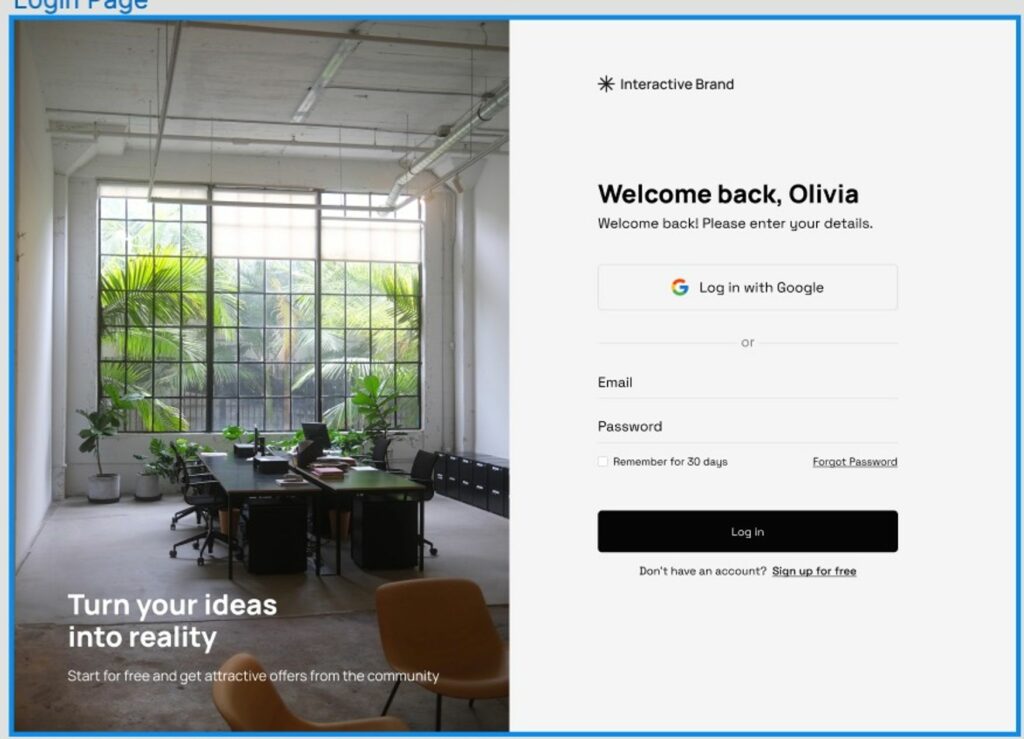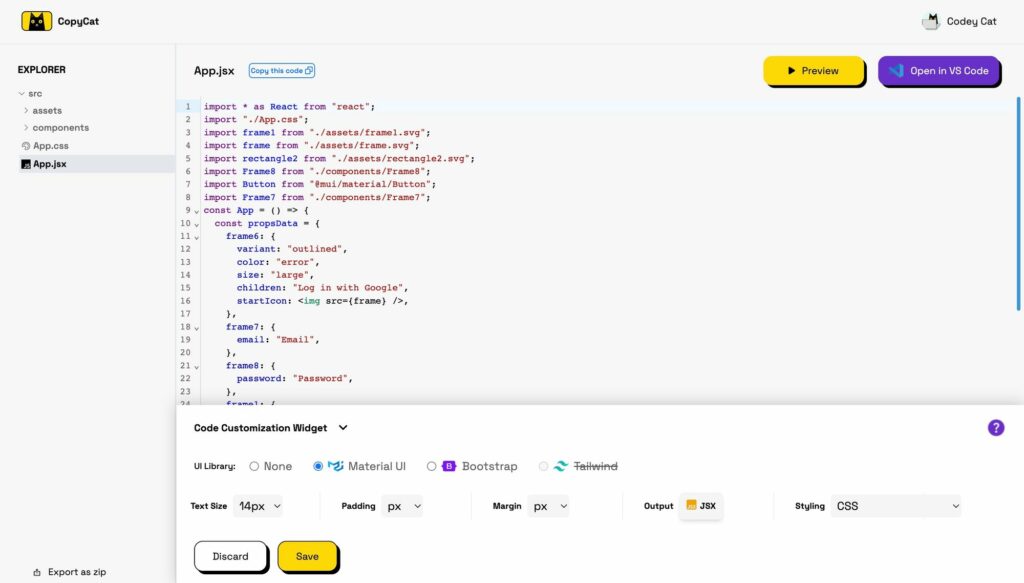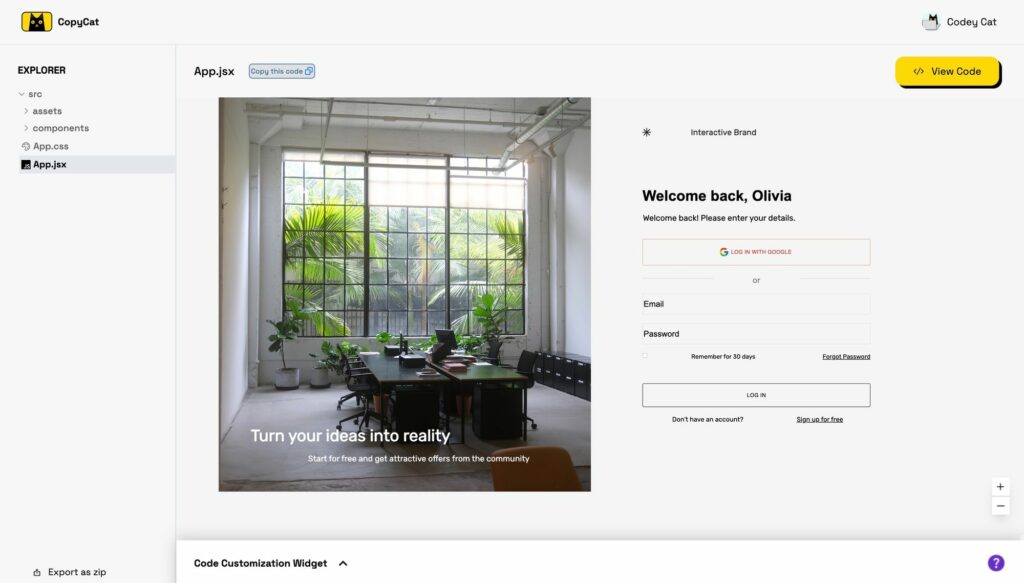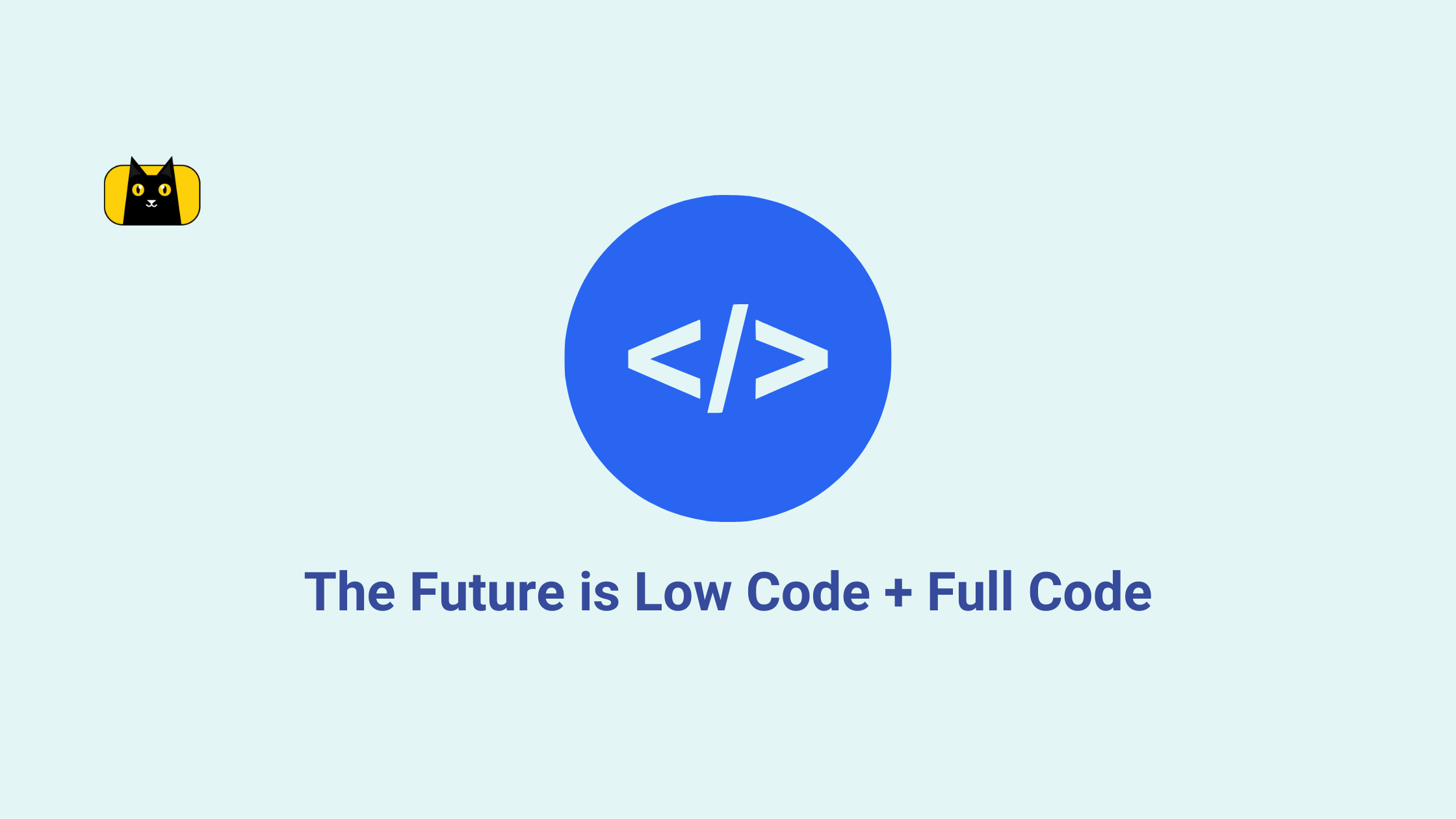
As web developers, we’re constantly looking for ways to streamline your workflow and save time without sacrificing the quality of your code.
One approach that has gained popularity in recent years is using low-code tools. But many think of low code as a fad that will pass. And it is not without reason. Low-code tools have glaring drawbacks as you scale your project. While low-code tools can be great for quickly prototyping and building simple applications, they often need more flexibility and customization options than full-code development provides.
But what if we told you there’s a way to have the best of both worlds?
By leveraging the strengths of both approaches, you can work more efficiently while maintaining control over your code.
In this article, we will explore how you can combine low-code and full-code development to speed up React development. This approach helps developers work smarter, not harder. It provides the speed and ease of low-code tools and the flexibility and control of full-code development. This can save time and enable a more collaborative environment between developers and designers, bridging the gap between design and development. We’ll discuss the benefits and drawbacks of each approach and how combining them can help take React development up a notch.
Low Code Development

Source: https://www.softude.com/low-code-development-services
What is Low Code Development?
Low code development is a visual approach that enables developers to build applications faster and with less hand coding than traditional development methods. With low code development, developers use drag-and-drop interfaces, pre-built templates, and various other tools to create applications with minimal coding effort.
Advantages of Low Code Development
Low code development offers several benefits over traditional development methods, including:
- Faster time-to-market: Low code development enables developers to create applications faster than traditional coding methods.
- Lower development costs: With less coding required, low code development can reduce the costs of hiring a large team of developers.
- Greater flexibility: Low code development platforms often offer pre-built components and integrations that can be easily customized to meet specific requirements.
- Easier collaboration: With a visual interface and pre-built components, low-code development platforms can help bridge the gap between developers and designers, enabling easier collaboration.
Disadvantages of Low Code Development
While low code development offers several advantages, there are also some potential drawbacks to consider:
- Limited customization options: Low code development platforms often provide limited customization options, limiting the ability to create unique and complex applications.
- Platform lock-in: Some low-code development platforms may require developers to use specific tools or technologies, limiting flexibility and making it difficult to migrate to other platforms.
- Security concerns: Low code development often involves using pre-built components and integrations, so security risks may be associated with using these components.
Full Code Development

Source: https://five.co/no-code-low-code-and-full-code-whats-the-difference/
What is Full Code Development?
Full code development is the traditional method of building applications from scratch, where developers write code from scratch to create custom applications. This method typically requires more time and resources than low-code development but provides greater flexibility and customization options.
Advantages of Full Code Development
Full code development offers several advantages over low code development, including:
- Greater customization options: With full code development, developers have complete control over the application code, enabling greater flexibility and customization options.
- More complex applications: Full code development is often necessary to create more complex applications requiring custom functionality.
- No platform lock-in: Full code development provides complete control over the application code, making it easier to migrate to other platforms.
Disadvantages of Full Code Development
While full code development provides incredible customization options, there are also some potential drawbacks to consider:
- Longer development time: Because full code development requires writing code from scratch, it can take longer to build applications than low code development.
- Higher development costs: With full code development, developers need to write more code, which can increase development costs.
- Limited collaboration: Full code development can make it more difficult for developers and designers to collaborate, as the code can be more complex for non-technical team members to understand.
Combining Low Code and Full Code Development for React
Low code and full code development both have their advantages and drawbacks. But what if we could combine them to make a more efficient development process? CopyCat makes this possible. With CopyCat, developers can have full control over their code while enjoying low code development benefits.
The tool generates code for common React components like buttons, input fields, and more and also offers customization through inline CSS, styled components, or traditional CSS and SCSS. It also allows developers to choose between MUI, Bootstrap, or no UI library, and to export the code in either JSX or TSX format. This flexibility and customization make it easy to use CopyCat with existing codebases or to start a project from scratch. The tool also gives a preview of generated code and components—this way you can choose what exactly to export.
CopyCat helps developers save time and reduces manual coding while also allowing designers and developers to work together more effectively. In short, combining low code and full code development with tools like CopyCat can accelerate React application development and improve collaboration.
In the next section, we’ll discuss a specific use case\ for combining low code and full code development with CopyCat.
Using CopyCat to Combine Low Code and Full Code Development for a Login Screen
Let’s say you’re working on a React project and need to add a new login screen designed by your team’s designer in Figma. With low-code development, you can quickly generate some basic components for the login screen using a tool like Bubble or AppSheet. However, these tools can be limiting when it comes to customization and fine-tuning the code.
That’s where CopyCat comes in. With CopyCat, you can upload the Figma design and generate high-quality React code that closely matches the design. This approach allows you to take advantage of the speed and convenience of low-code development while maintaining full control over the code.
Once the initial code is generated, you can use full-code development to customize and refine the code to your exact specifications. This gives you the flexibility to add any additional features or functionality you need while ensuring the code is maintainable and scalable.
How to Use CopyCat
Here’s an example of how CopyCat can help you implement the login screen:
1. First, your designer creates the login screen design in Figma. Here’s an example of what it might look like:

Note: This design was made by Dario Daoud on Figma Community and published by Dzung Vu
2. Next, you can use CopyCat to generate code based on the design. Open the CopyCat plugin and select the components you want to include in the code. Here’s an example of what the generated code might look like:

My settings were MUI, 14px base text size, px for both margin and padding unit, syntax was jsx and finally styling was in CSS format.
And here’s the preview of the same code on CopyCat:

3. Finally, you can customize the code to fit your project requirements. You can add functionality, tweak the layout, and make other necessary adjustments. Here’s an example of what the final login screen might look like:
By combining low-code and full-code development with CopyCat, you can save time while creating high-quality, customized code that meets the specific needs of your project.
The Benefits of Combining Low Code and Full Code Development
As we’ve discussed, both low-code and full-code development approaches have advantages and disadvantages. However, by combining the two approaches, you can enjoy the benefits of both while mitigating their weaknesses.
Build Fast
One significant benefit of combining low-code and full-code development is the speed at which you can build and iterate on your React applications. With low-code tools, you can quickly create prototypes or build simple applications, while full-code development allows for more customization and flexibility. By leveraging the strengths of both approaches, you can build your application quickly and customize and optimize it further with full-code development.
Collaborate Better
Another benefit of combining these two approaches is the ability to collaborate more effectively between designers and developers. Low-code tools often have design and preview built-in, which can help bridge the gap between design and development. Designers can quickly create mockups and prototypes with low-code tools, and developers can then take those designs and customize them further using full-code development. This can lead to a more collaborative and efficient development process, with designers and developers working together to create high-quality applications.
You can further accelerate your development process using CopyCat, a low-code tool that generates full-code output. CopyCat allows you to quickly create a React application using low-code tools and then export the output as full code, giving you complete control and flexibility over your codebase.
Future of Development
As we look to the future of development, one trend rapidly gaining popularity is using low-code and no-code platforms. These platforms enable users to create software applications with minimal coding expertise, making it easier for businesses to innovate and stay competitive. However, while low-code platforms have their benefits, there will always be a need for full-code development for complex applications that require a more customized approach.
Ultimately, the future of development is likely to see a combination of both low-code and full-code approaches, with developers using these tools to create applications that meet the specific needs of their clients and customers. As the demand for software applications continues to grow, it is clear that developers will play a crucial role in shaping the future of technology and driving innovation in the years to come.







